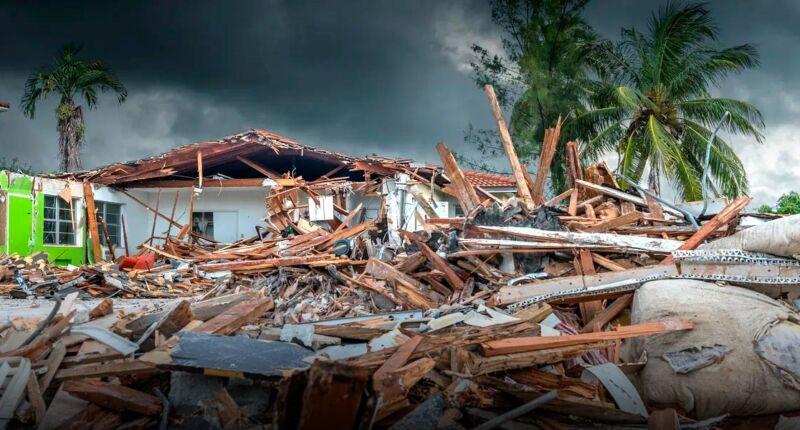
Reinsurance giant Munich Re has estimated that insurance industry losses from natural disasters or catastrophes in 2021 were roughly $120 billion, the second-highest annual total ever, in 2022 were roughly $100 billion.
This is a higher total than most sources had been discussing, as we’d been hearing that annual natural catastrophe and severe weather insured losses might reach $110 billion.
Goldman Sachs have estimated that US insured losses from catastrophes in the second quarter of the year could be more than $4 billion. At this level, Q2 losses would be around 40% of the 10-year average of $11.1 billion for US seasonal catastrophes in that quarter.
While the catastrophe environment in the US was benign in Q2, Goldman Sachs notes that Canada experienced significant losses from a derecho in late May that impacted densely populated areas around Toronto, Montreal & Quebec City.
Outside of North America, the most notable event was flooding in South Africa that is estimated to have caused more than $3 billion economic losses between two events, and flooding and landslides in China, economic losses from which are estimated at more than $1.5 billion.
For hurricanes, scientists anticipate that the proportion of severe storms and of storms with extreme rainfall will increase because of climate change. Even though events cannot automatically be attributed to climate change, analysis of the changes over decades provides plausible indications of a connection with the warming of the atmosphere and the oceans. Adapting to increasing risks due to climate change will be a challenge.
Although Goldman Sachs expects catastrophe experience to be below normal levels this quarter, it does warn that severe weather events for Hail and Wind have been above 2021 levels during Q1 and Q2 so far this year.
Additionally, Tornado activity was roughly in line with the multi-year average.
Some company’s called out non-cat weather as being more benign in the year ago quarter, and analysts expect this quarter to be more in line with a normal expectation or potentially a bit higher than normal.
Considering that consensus estimates are anticipating loss ratio improvement YoY driven by pricing action in excess of loss cost despite higher inflation, this is seen as a risk, and Goldman Sachs believes that it could drive less loss ratio improvement YoY than is anticipated.
Insurance and reinsurance broker Aon had pegged 2021 insured catastrophe losses as 13% above the annual decadal average by mid-November, having reached roughly $107 billion.
Reinsurer Swiss Re then said that insurance industry losses from natural catastrophe events were preliminarily estimated to reach $105 billion in 2021, a figure given in mid-December.
So Munich Re’s figure of $120 billion is higher and the highest total estimate for 2021’s global natural catastrophe and severe weather activity that we’ve seen.
Part of the reason for this is that Munich Re has put a number on the US tornado outbreak in December, saying that economic losses are estimated to be around $5.2 billion and the insured losses from the tornadoes would be around $4 billion.
That’s higher than the roughly $3 billion insurance industry loss that risk modeller Karen Clark & Company had estimated.
Overall economic losses for 2021, from natural disasters, catastrophes and severe weather, are estimated to have been $280 billion by Munich Re, which is the fourth-highest annual total to date.





